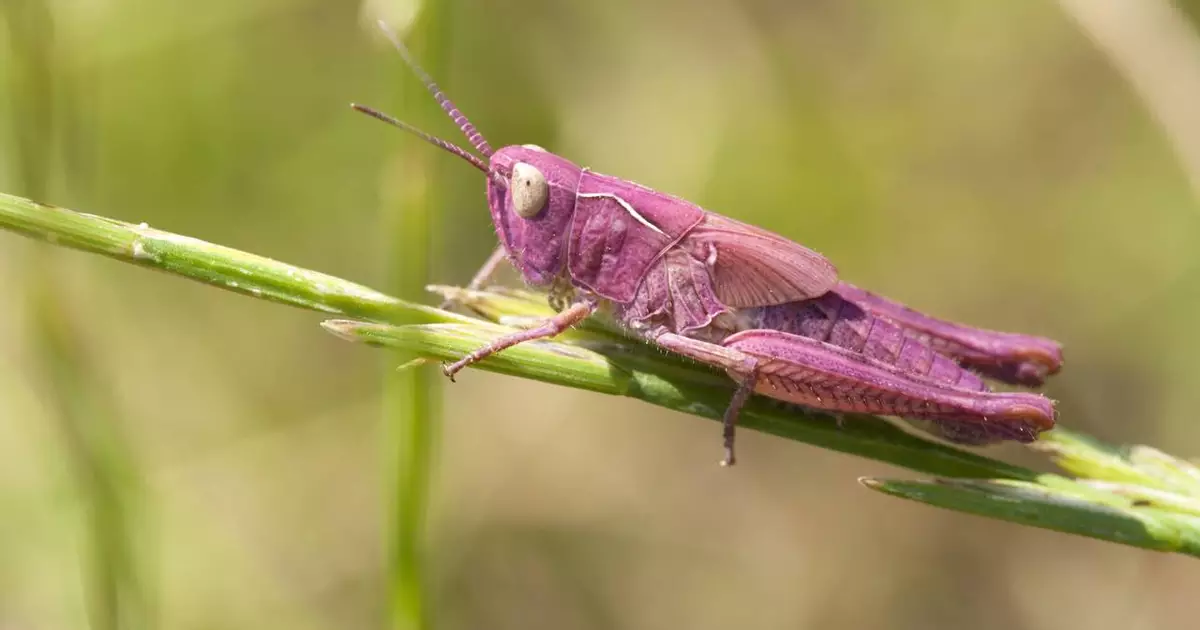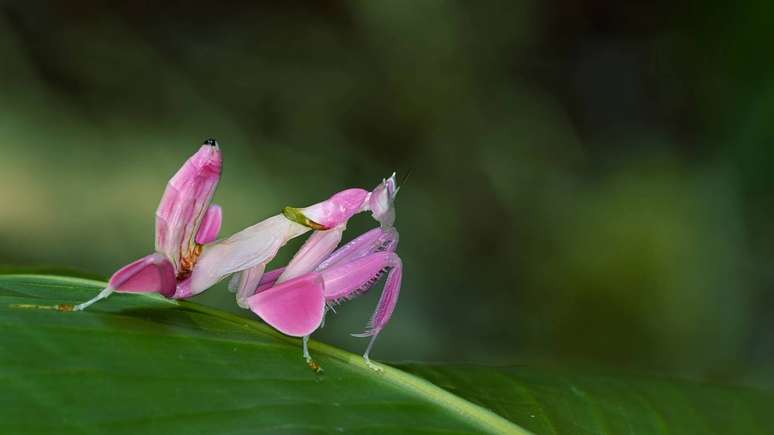
Discover why pink grasshoppers have short lifespans and understand the genetic and environmental factors that influence grasshopper survival.
The pink grasshopper arouses curiosity because of its unusual color. erythema. This unusual feature not only attracts visual attention, but also directly affects the lifespan of these insects. This phenomenon mainly affects a small number of individuals of a common species and has been observed in various regions of the world, including Brazil.
Many people wonder why these grasshoppers are rarely seen, or why they disappear from the wild so quickly. The shortened lifespan of pink grasshoppers is likely due to biological and environmental factors that influence survival from infancy.
What causes grasshoppers to turn pink?
The pink color is caused by a genetic mutation known as erythema, which affects the insect’s normal pigmentation. In this condition, there is an excess of reddish pigment, reducing the natural green color characteristic of this species, creating a tone that ranges from pale pink to deep red. Although this change is rare, it is widely documented in the scientific record, primarily in young locusts newly hatched from eggs.
Erythema is distinguished from albinism and melanism, which produce animals with no pigment or excessively dark pigmentation. In the case of pink grasshoppers, erythema makes them stand out from the environment and directly affects their chances of survival.
Why do pink grasshoppers have a short lifespan?
Pink grasshoppers face greater risks in their habitat because of the stark contrast with their environment. Unlike green and brown specimens, which are perfectly camouflaged by leaves and branches, pink grasshoppers tend to be more exposed to predators such as birds, reptiles, and small mammals. The lack of camouflage makes it difficult for these people to escape and protect themselves, increasing their vulnerability.
In addition to predation risk, genetic variants associated with blushing may be associated with additional biological vulnerabilities. Studies have shown that this type of mutation can also affect physical development in some cases, making these grasshoppers less able to adapt to changing climates and searching for food than individuals with more common pigmentation.
- Increased exposure to predators:Due to its flashy coloring, effective camouflage is difficult.
- genetic vulnerability: Possible weakness related to redness mutation.
- Searching for food becomes less efficient: The search for food may be interrupted due to the high risk of being seen by humans.
How does camouflage ability affect the survival of these insects?
Camouflage is a fundamental evolutionary strategy for several insects, including grasshoppers. Natural color patterns allow most of these animals to remain unnoticed by predators while feeding or resting. In the case of pink grasshoppers, the lack of this resource puts them at a disadvantage from birth. This aspect highlights the important role that coloration plays in the survival rate of different mutations within the same species.
- The green color works hidden between leaves and grass, reducing exposure to predator attack.
- When a pink hue is present, the visual distinction eliminates the element of surprise and makes the insect more noticeable.
- Most pink grasshoppers are identified at a young age and rarely reach maturity, so this factor contributes to the low number of surviving adults.
Are any efforts to protect the pink grasshopper being carried out?
Currently, pink grasshoppers are not part of any specific conservation program. Its appearance is thought to be natural and the result of occasional mutations that do not significantly affect the total grasshopper population. However, recording these events could contribute to knowledge about insect genetic diversity and adaptation in their habitat.
In summary, the reduced life expectancy of these insects is directly related to their color differences, which increases predator risk and may be associated with biological limitations. Despite its rarity, this phenomenon continues to be the subject of research in the fields of insect biology and genetics, expanding our understanding of the effects of genetic variation in the animal kingdom.




